Please select:
Nature
Culture, arts and crafts
History
Nature
Caves
Gutman’s Cave
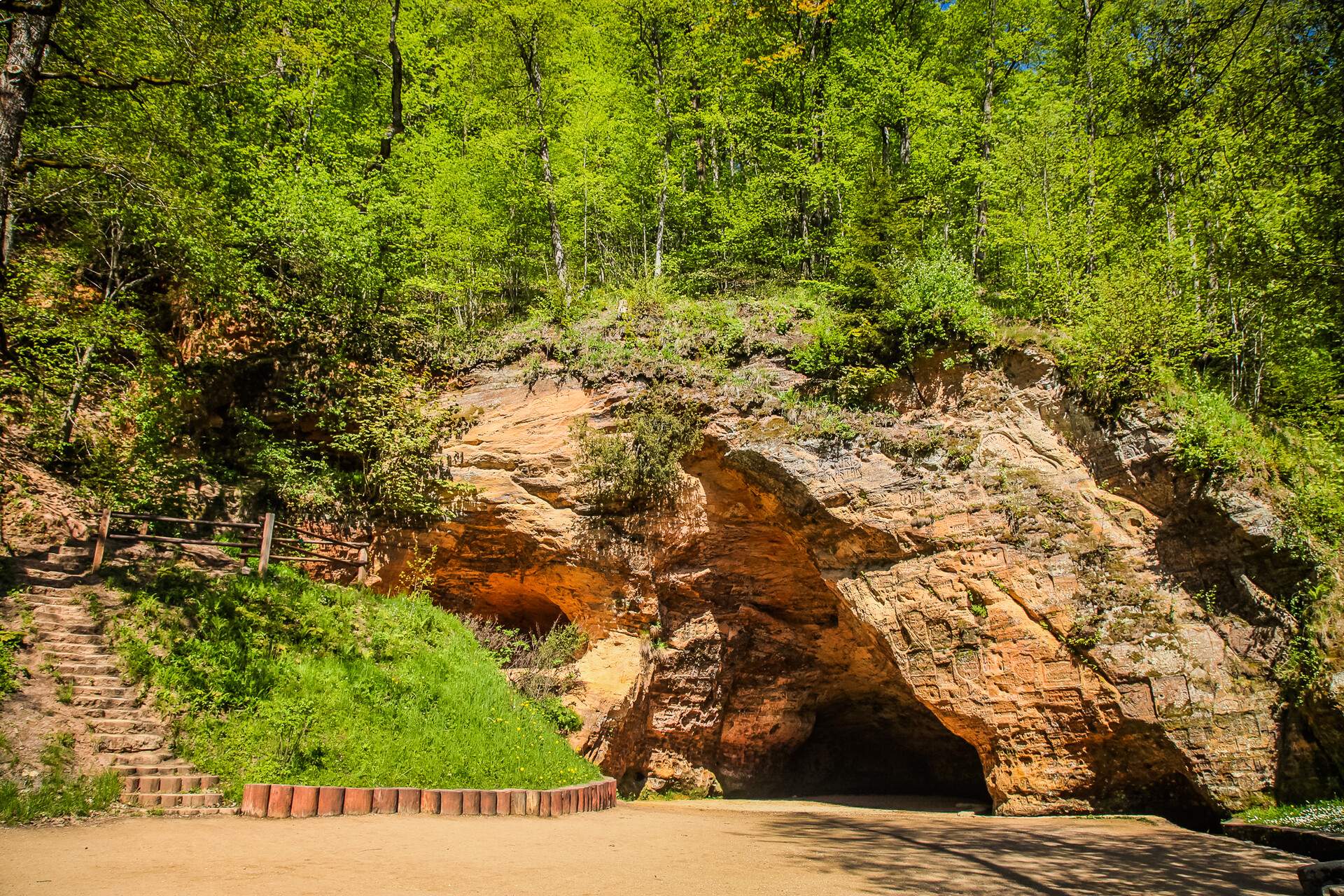
The largest cave in the Baltic countries and also the oldest tourist attraction in Latvia. On the walls of the cave, there are inscriptions from the 17th century. The legend of the Rose of Turaida began in this cave
Victor’s cave
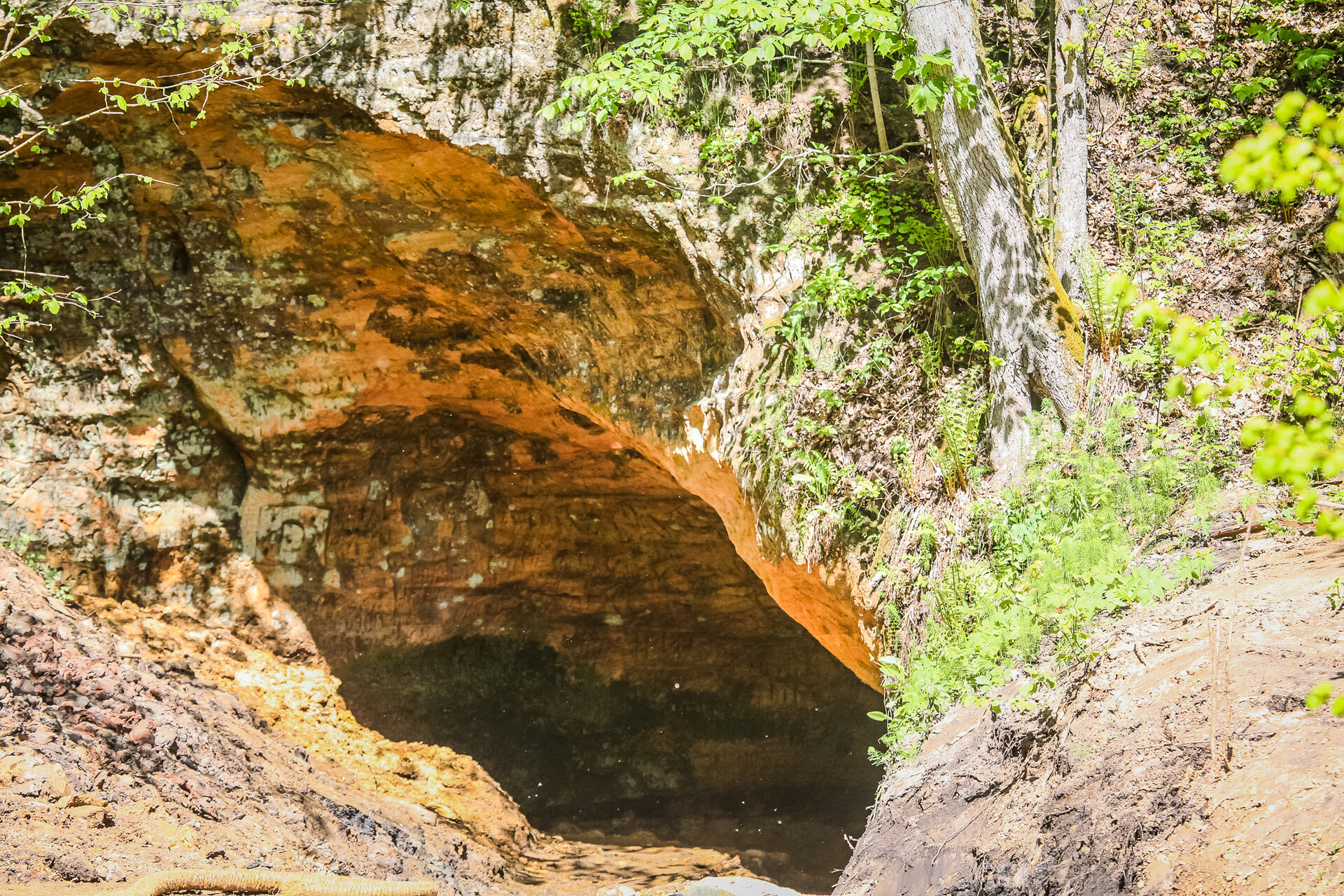
This artificially carved cave in sandstone cliff is located next to the Gutman’s Cave. The cave is 5.9 m long, 6.8 m wide, and 4.8 m high at the entrance.
According to legends, the cave was „carved” by Viktors Heils, a gardener of Sigulda, to place flowers for his beloved Rose of Turaida.
Small Devil’s Cave

Small Devil’s cave is located on the Piķene steep slope at the Gauja river bank – 1 km above Devil’s cliffs. The total length of the cave is more than 10 m and the entrance of the cave is separated by a pillar.
Nature objects
Ravine Vējupīte
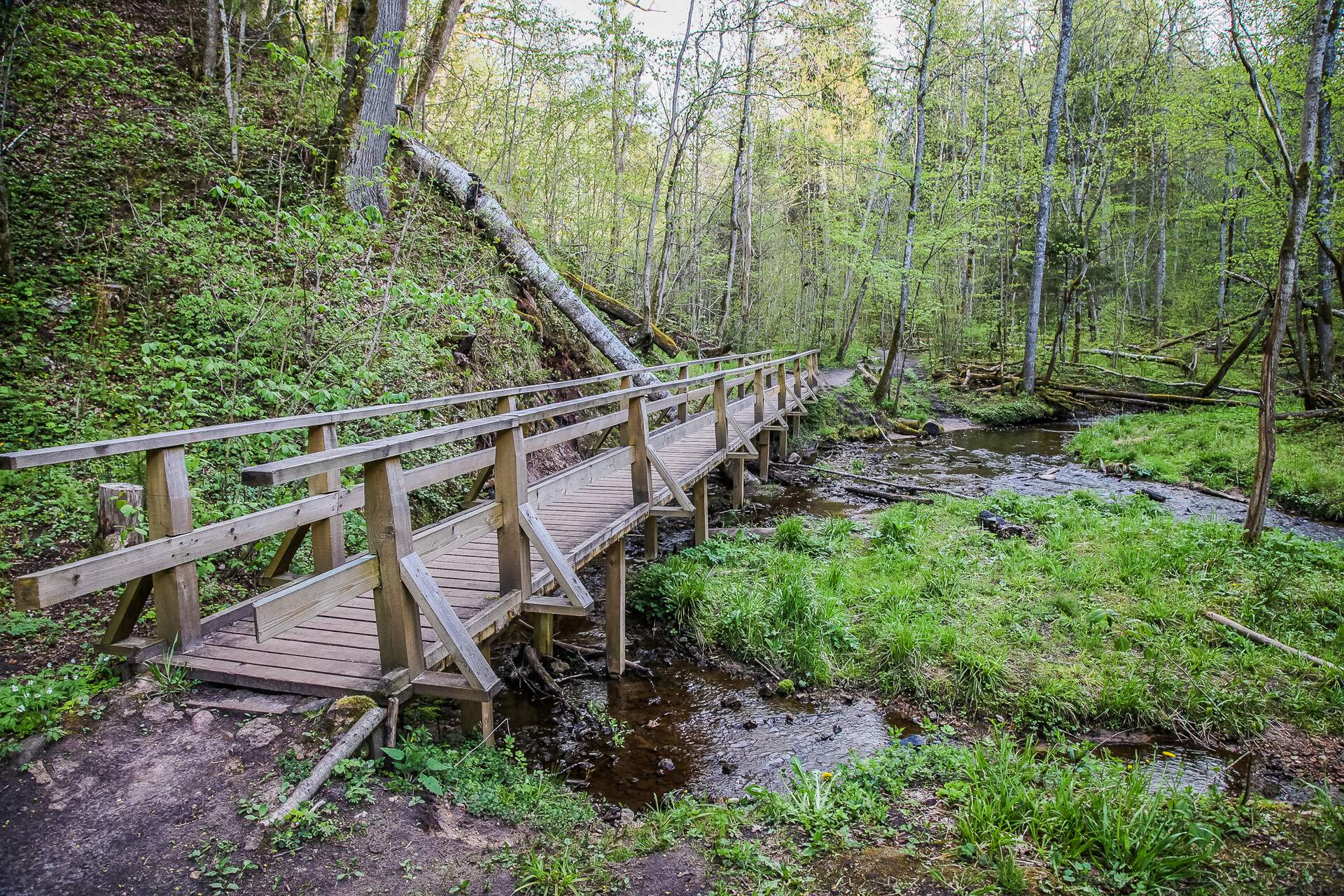
The banks of Vējupīte Ravine are covered in forests of slopes, large-size decayed wood and deadwood. Here one can spot traces that woodpeckers have left on tree trunks and sometimes hear the birds.
Vikmeste’s river
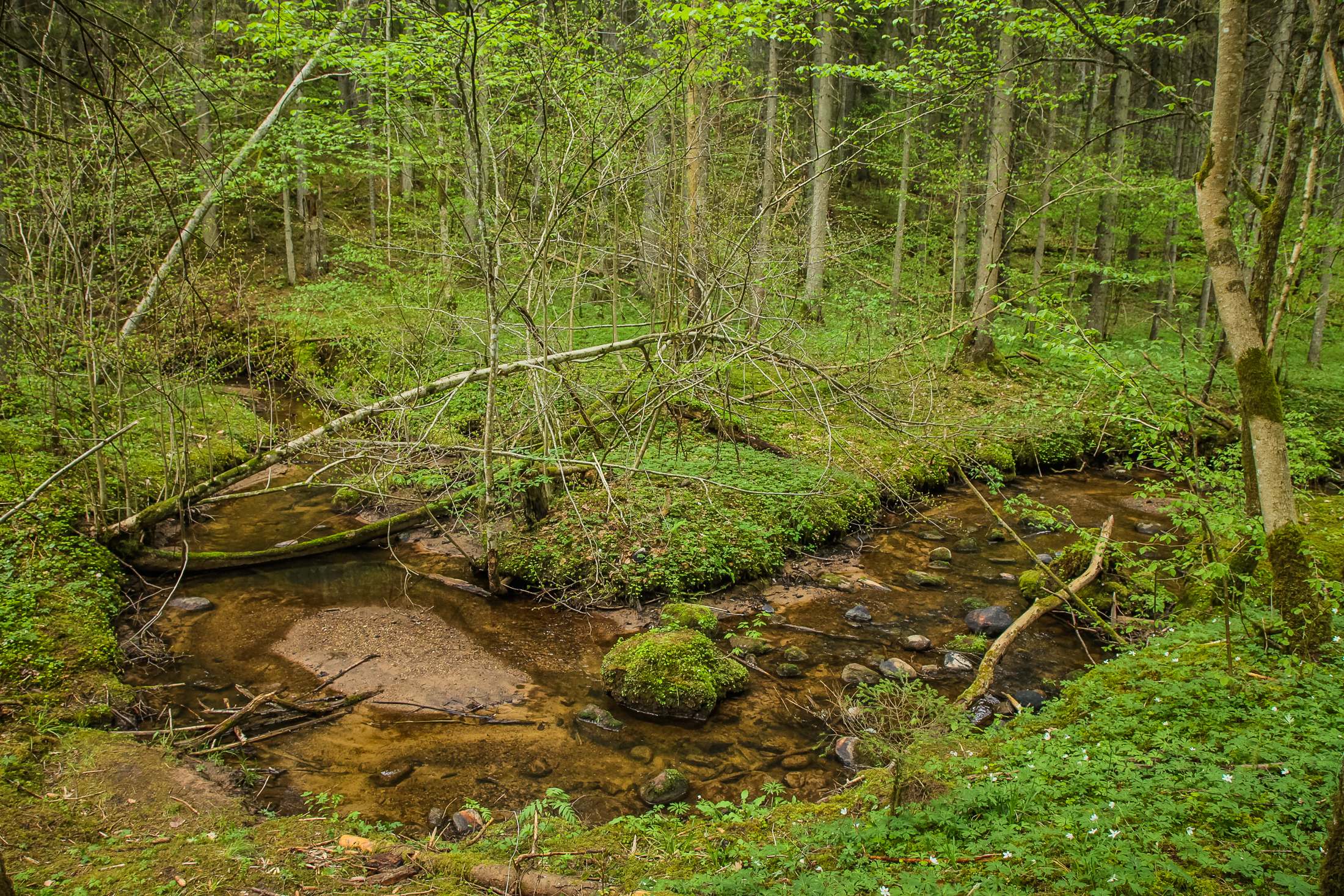
Vikmeste River used to be the natural border between the lands of Turaida and Krimulda. A number of picturesque sandstone rock outcrops can be found in the valley.
Emperor’s chair and Emperor’s view
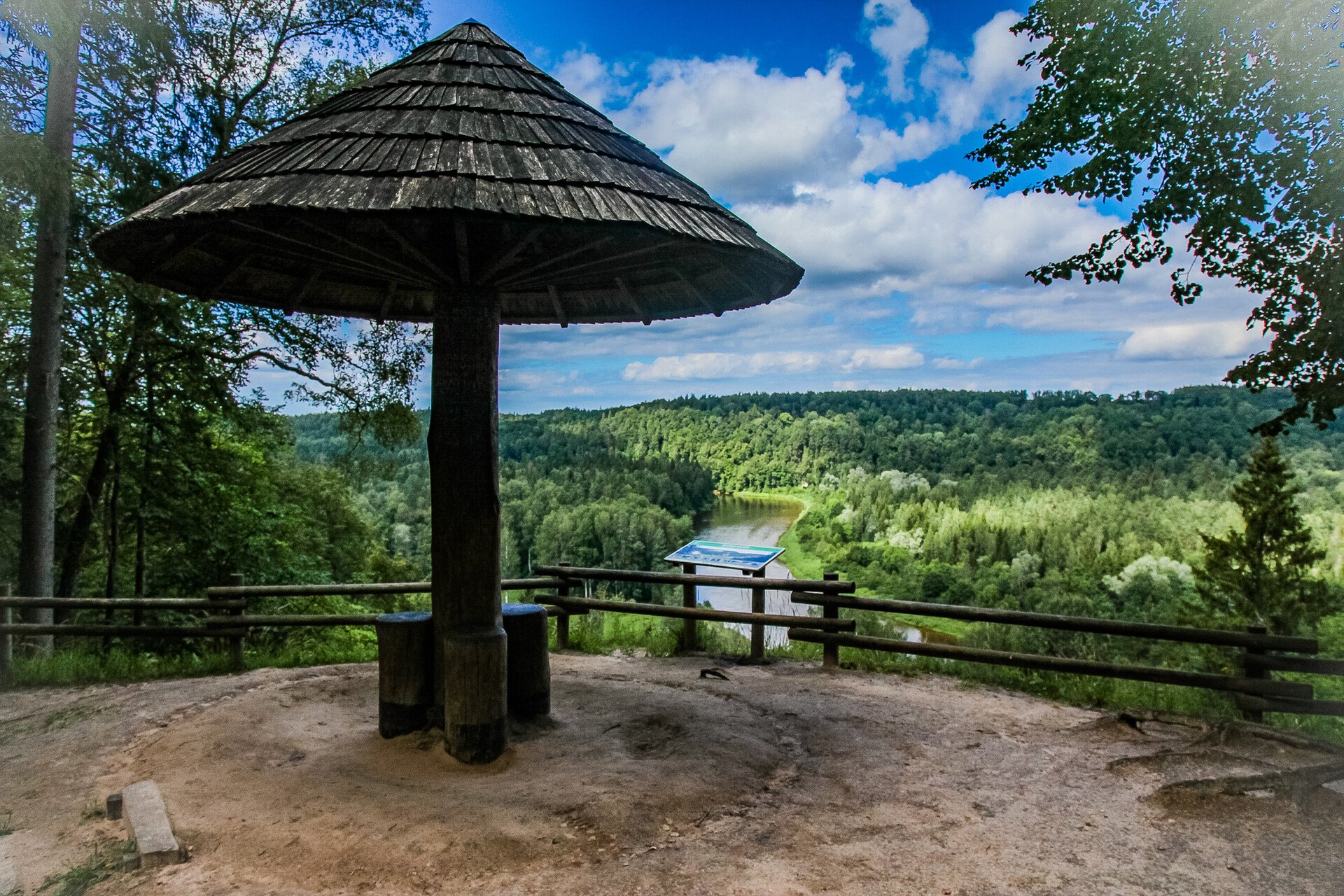
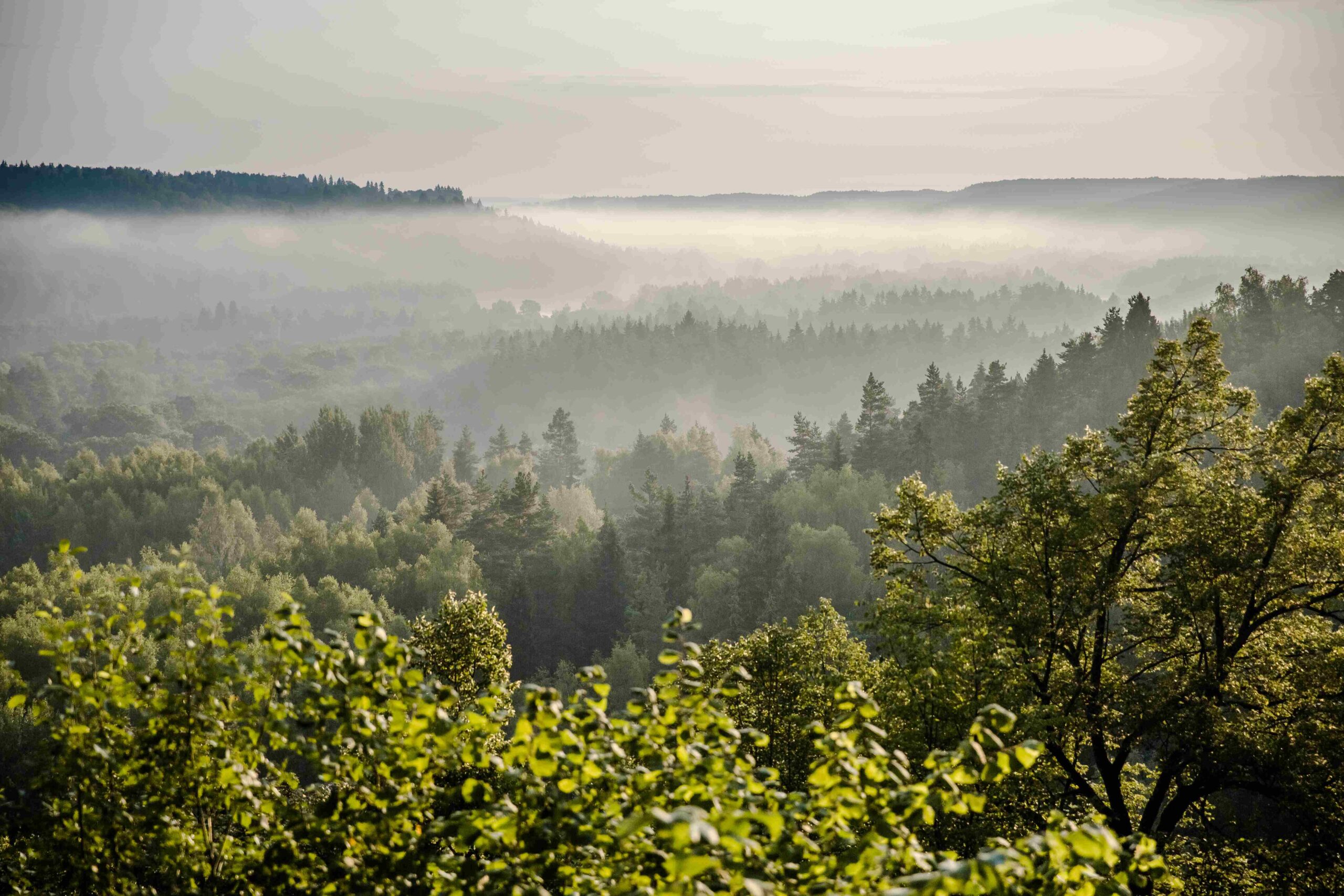
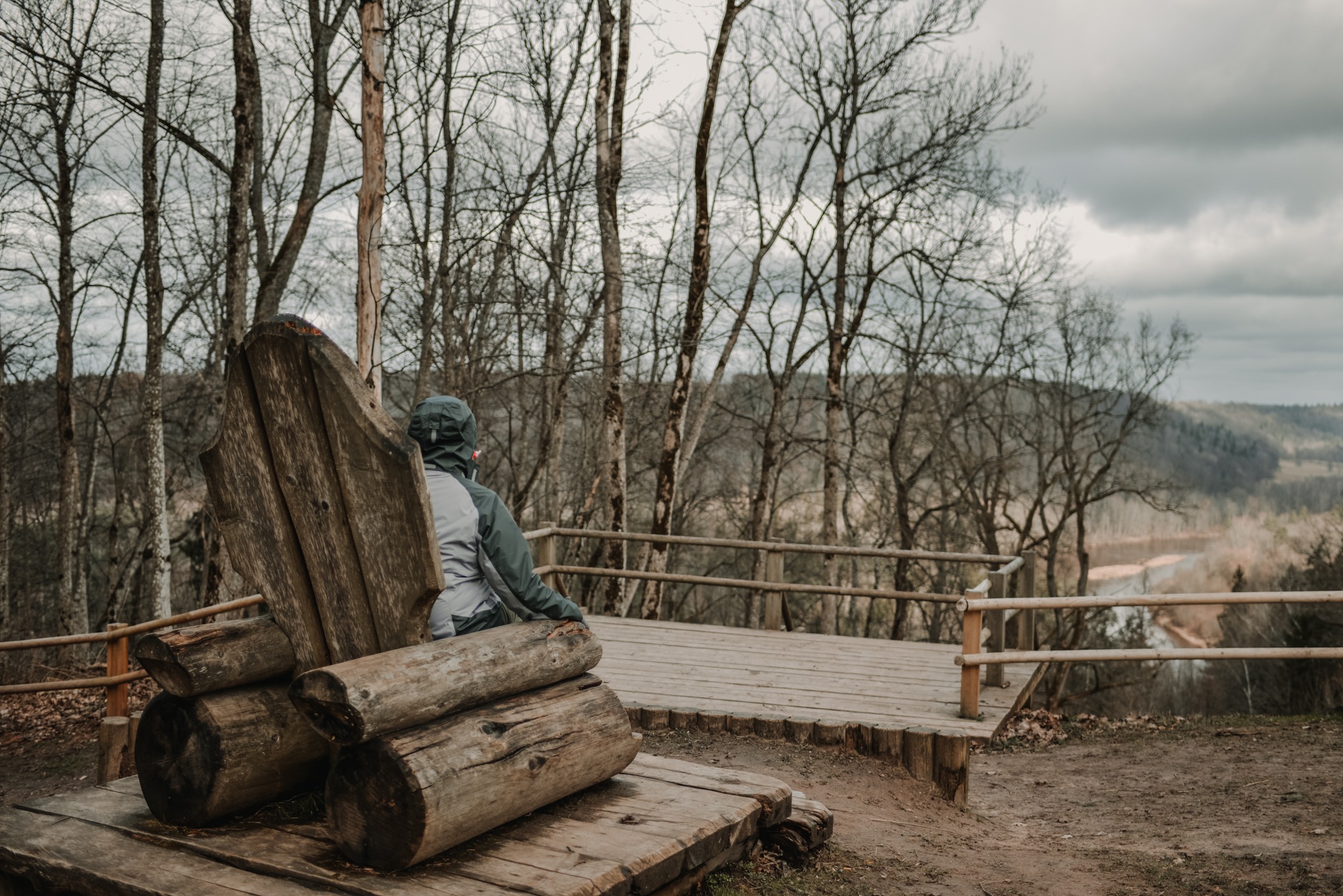
Dauda Waterfall
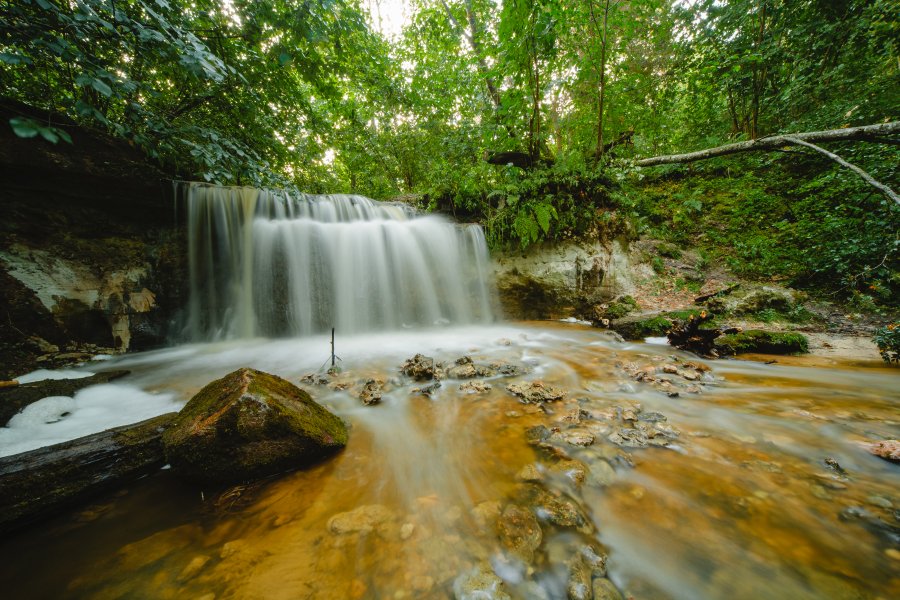
Dauda waterfall is located north-east of Sigulda Daudas river bed. The third biggest waterfall in Latvia. Height – 2,4 m, width – 1,5 – 2,5 m.
Zoo
Safari park More, deer garden
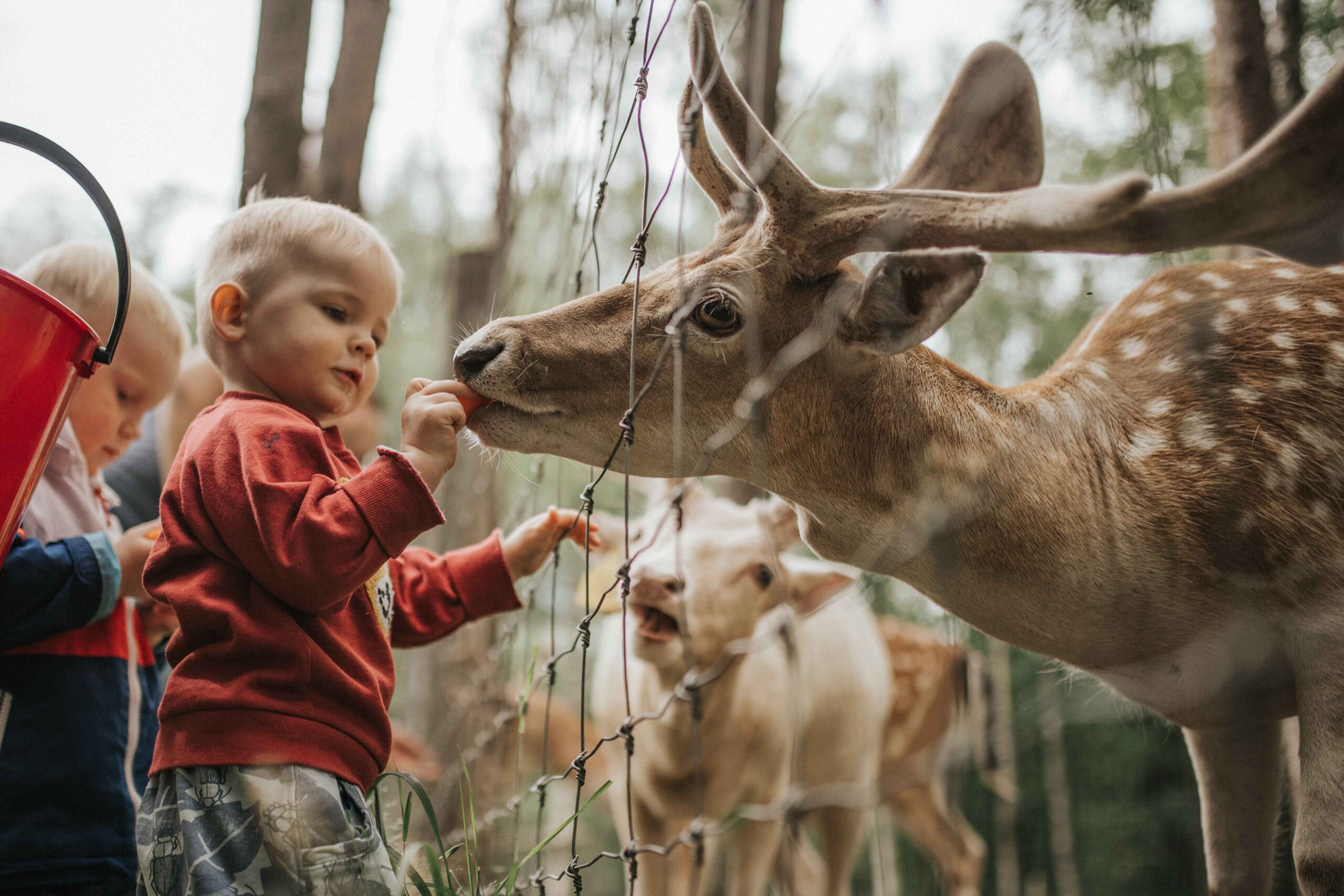
Culture, arts and crafts
Cinema
Cinema Lora
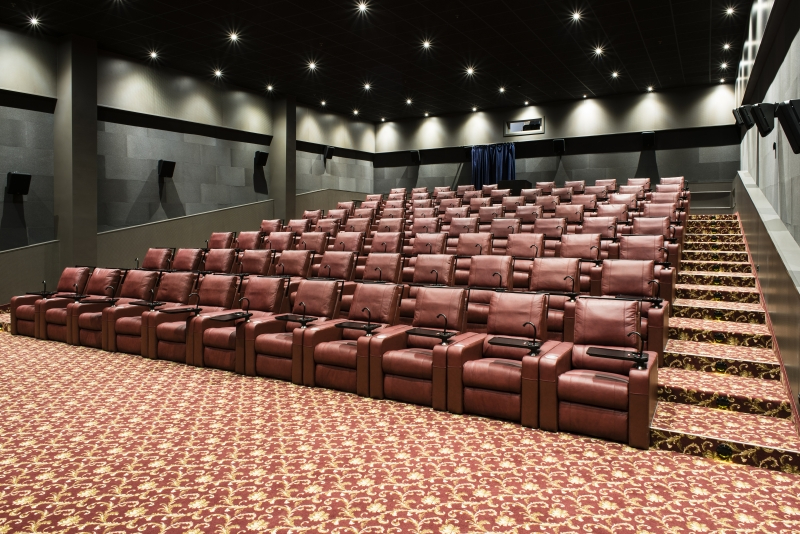
In three different cinema rooms, you can watch the latest movies in super-comfortable conditions. Big leather chairs are equipped with tables that incorporate lighting for a more comfortable food enjoyment with a service button to call a waiter.
Concert venues
Culture centre Siguldas devons
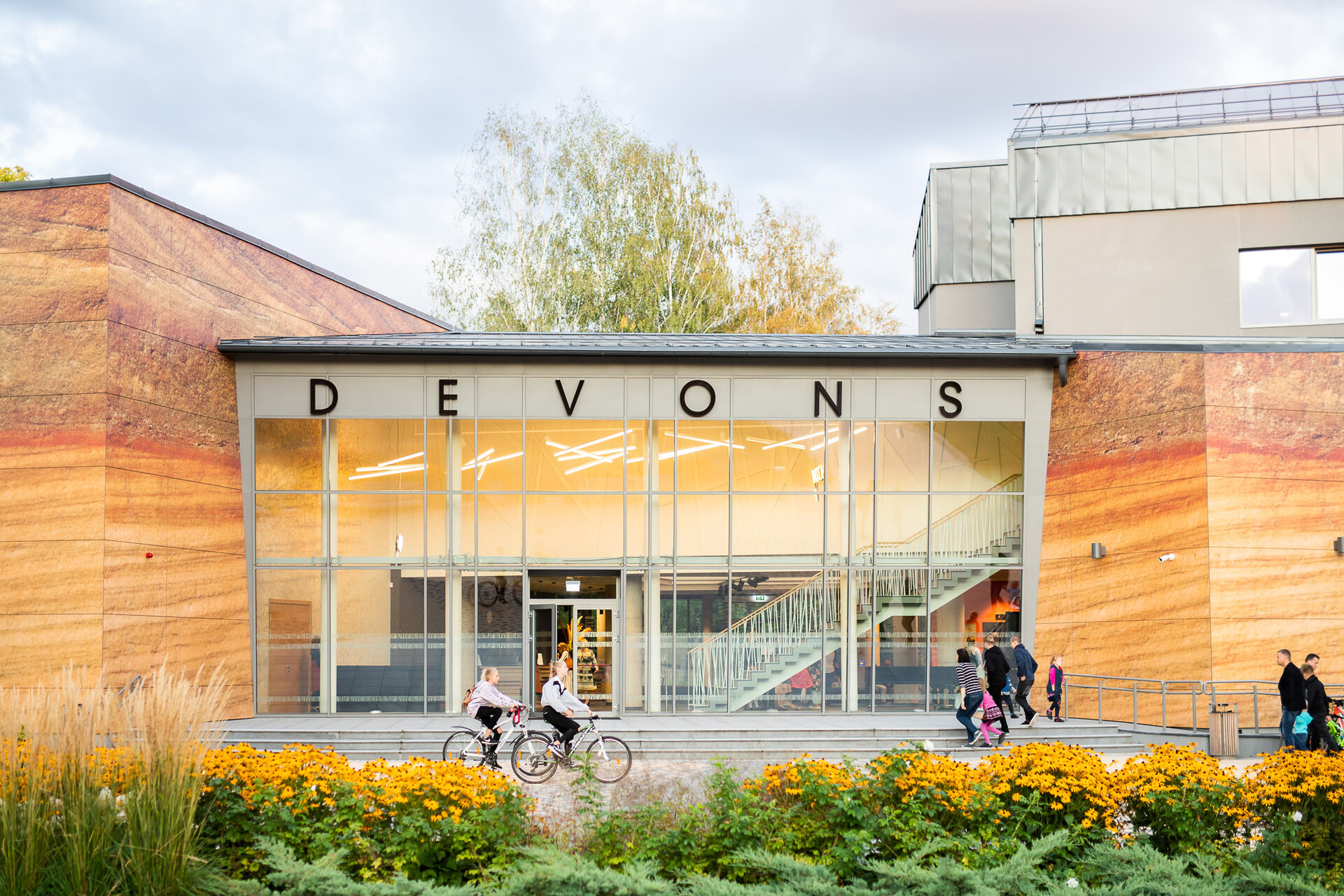
The culture centre “Siguldas devons” was opened on September 14, 2018, after an extensive reconstruction. The building is named after a period that wrote a magic code in the Gauja river sandstone layers forever when waters covered the Sigulda neighborhood.
Sigulda Castle ruins
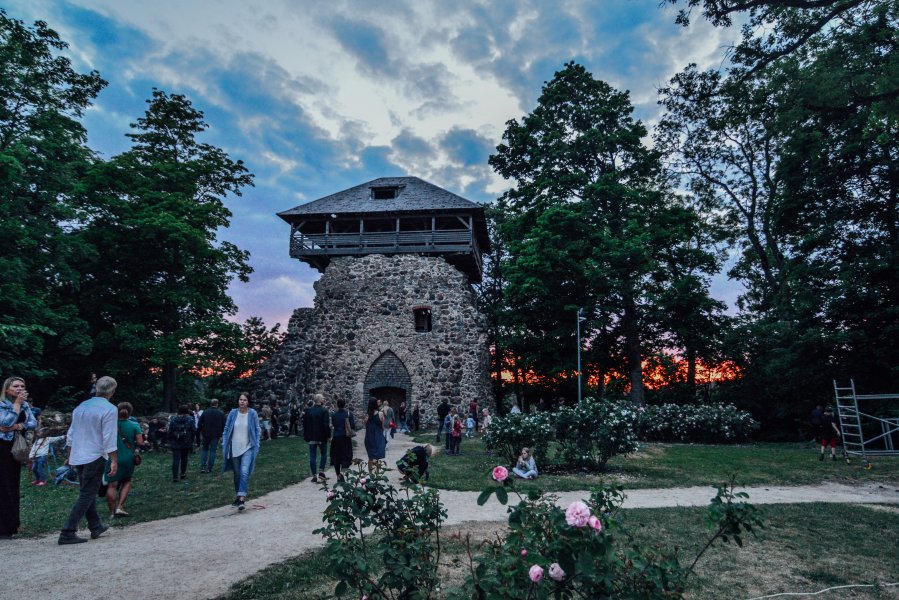
Livonian order Sigulda castle is not only recognized as a historic sightseeing attraction for tourists but also as a significant venue for concerts and events.
Every year various concerts and festivals take place in Sigulda castle ruins.
Museum
Live Silver Museum
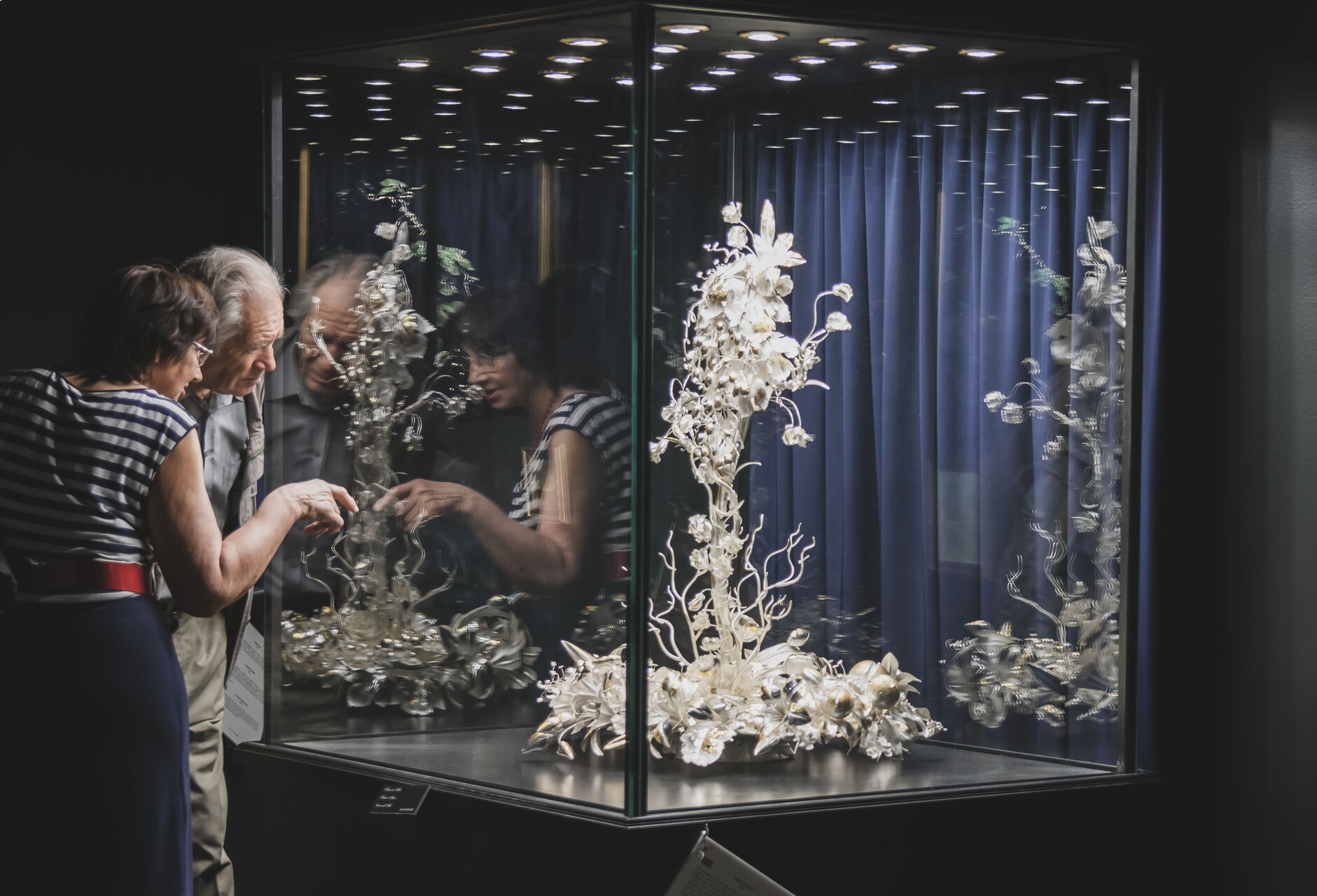
The idea of a Live Silver Museum originated in Limbaži in 2012. In 2013 the museum won the title of “The Best New Tourist Attraction”, and expanded in Riga in 2019, but now the creative business community – Sigulda Castle Quarter – can be called it’s home. When visiting the museum, visitors will have the opportunity to learn the story of the origin of each work of art and get to know the various types of silver by going on a guided tour.
Turaida Museum Reserve
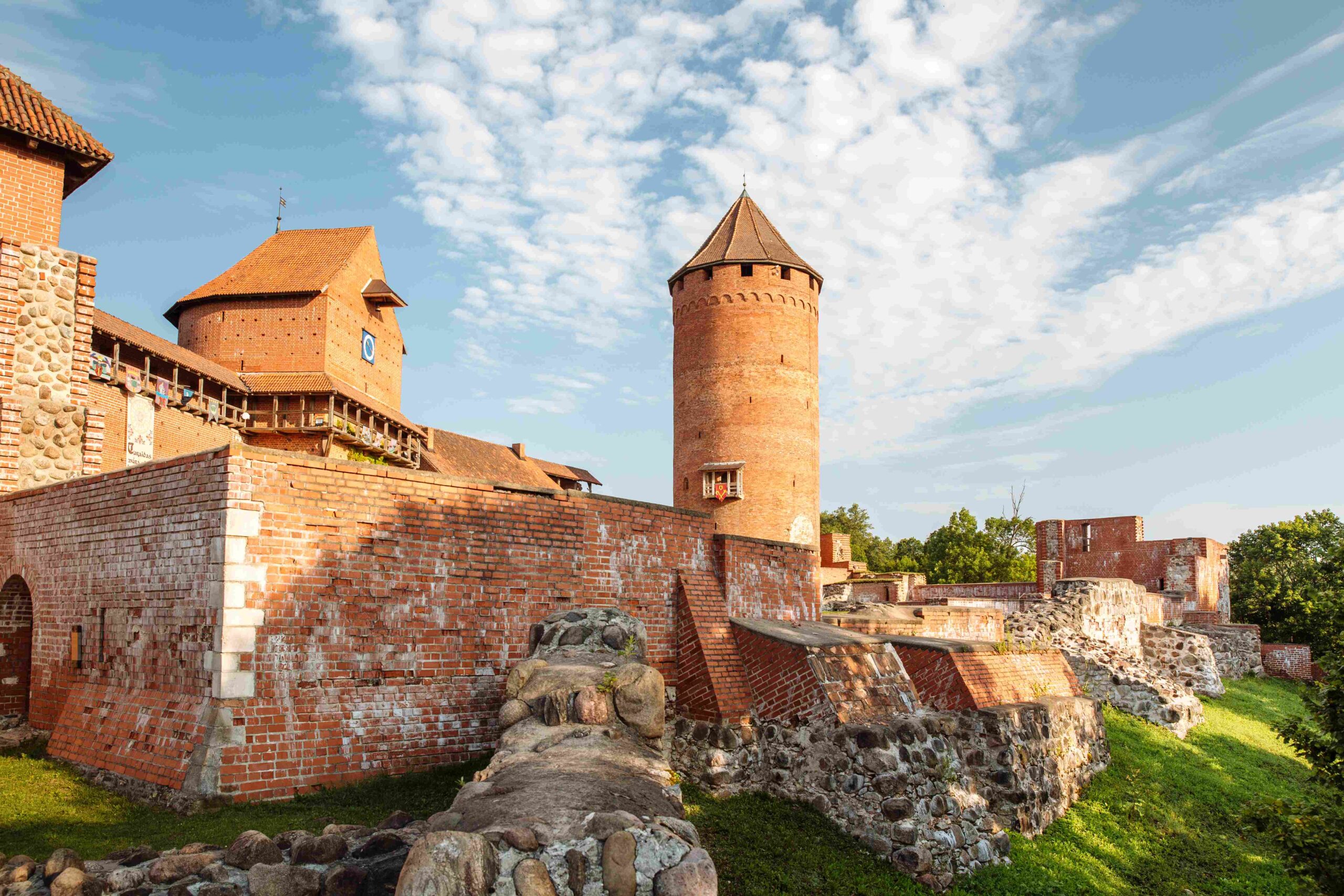
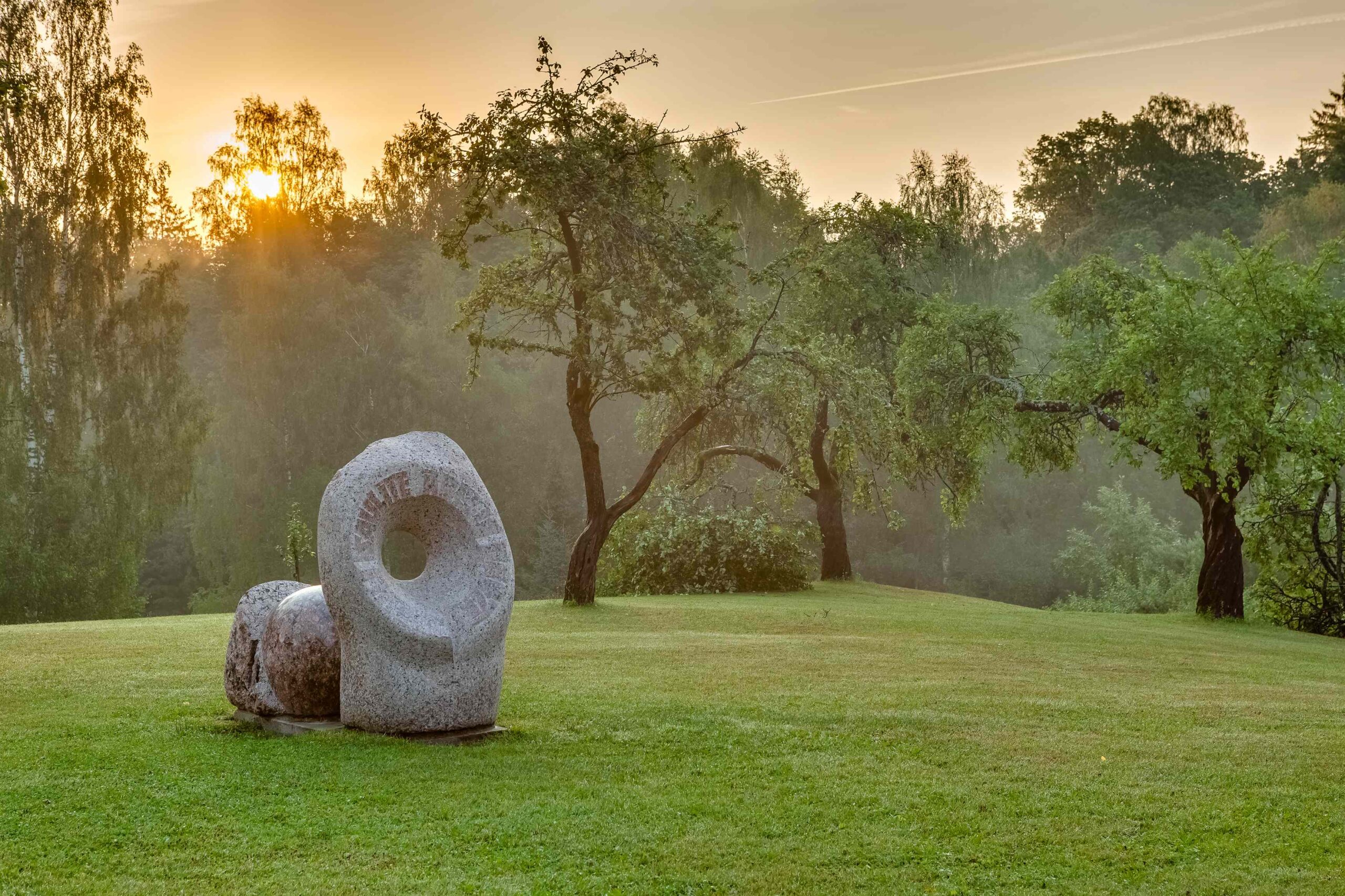

The most visited museum in Latvia, where you can get acquainted with expositions concerning archaeology, culture, and art history. Livs, the native people of this region, referred to this place as the Garden of God! The area is comprised of 42 hectares rich with archeological, architectural, historical, and art treasures, which tell the compelling story of a thousand-year-long history. Exhibits at the museum show the people’s lives and events throughout history as well as their traditions and crafts.
Urban environment objects and sculptures
Station square and Laima clock
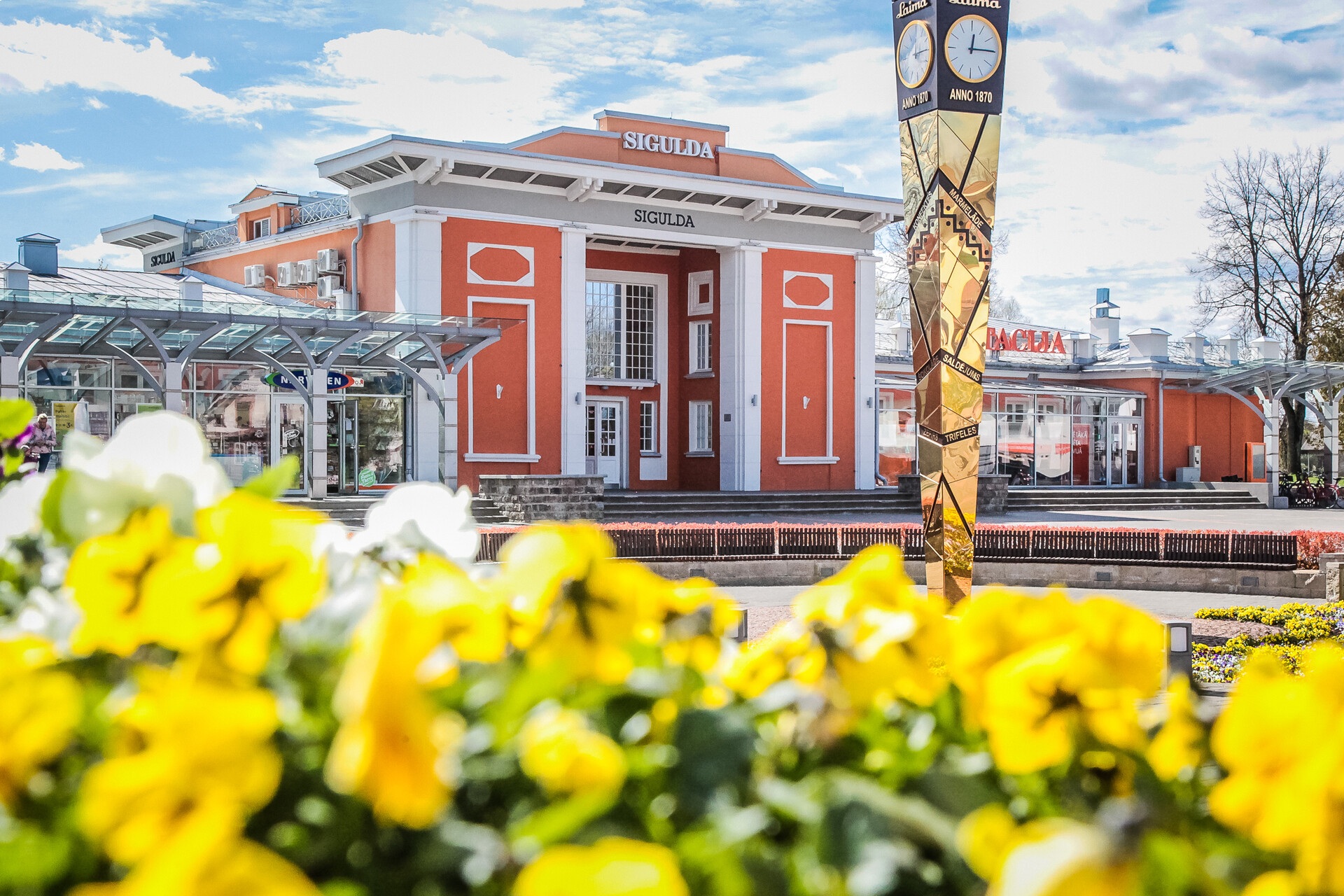
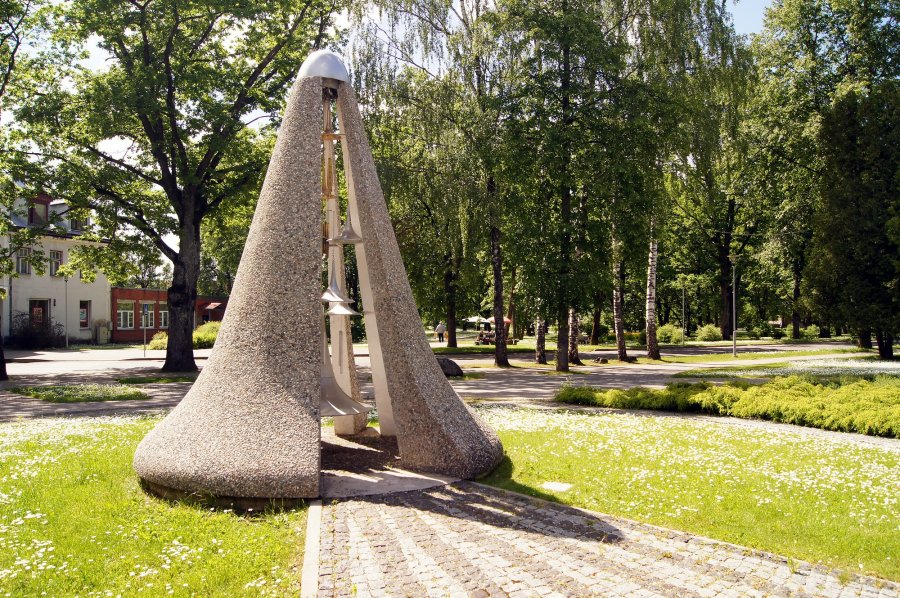
The sculpture “Wind chimes”
Environmental object for the ride of the Latvian cyclist unit
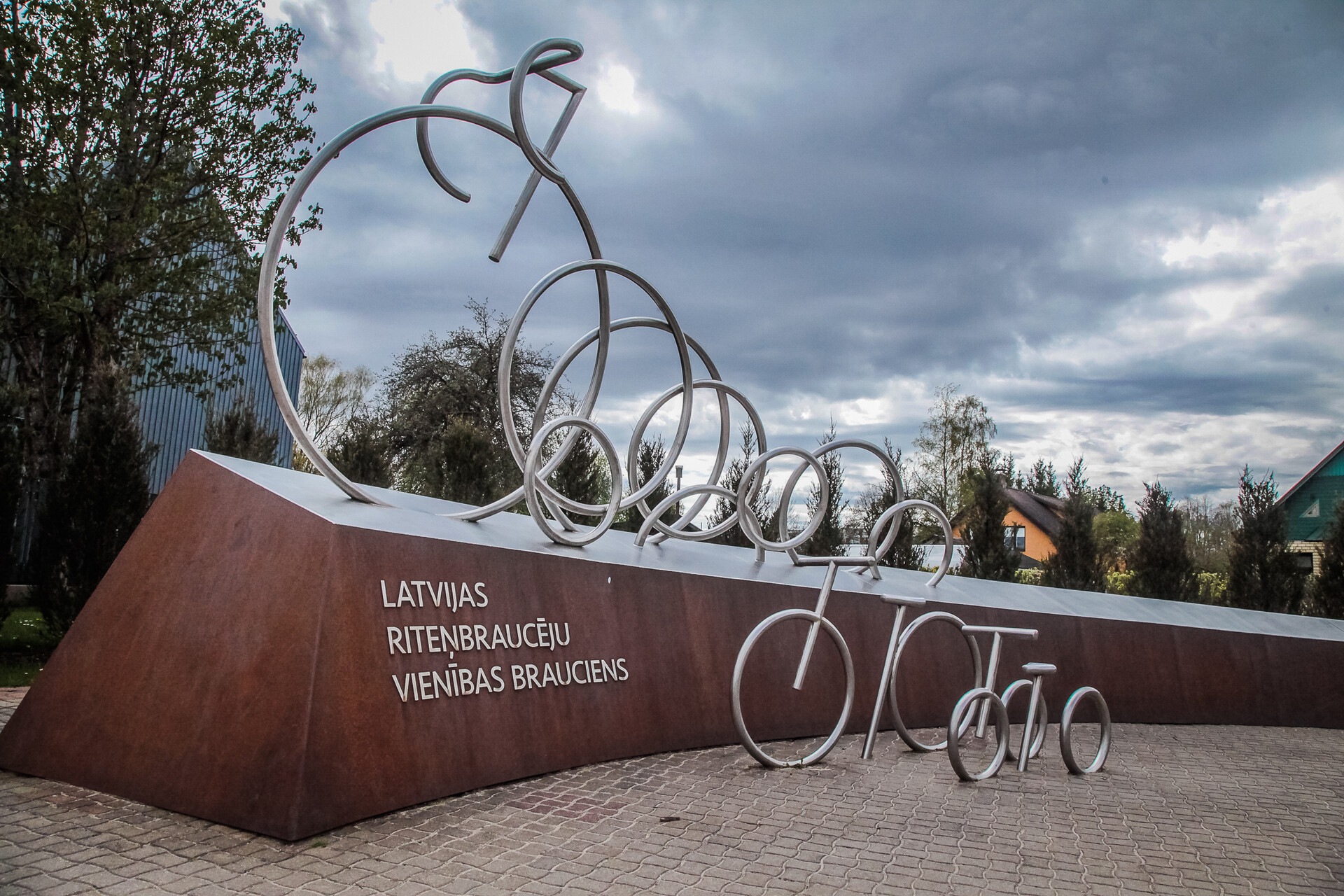
Environmental object in honor of the 25th Latvian cyclist unity ride (unveiled in 2016). The author is Arvīds Endziņš, head of the Metal Design Department of the Latvian Academy of Arts. The first names and surnames of the 2015 cycling participants are engraved on the environmental object.
History
Churches
Sigulda Evangelical Lutheran church
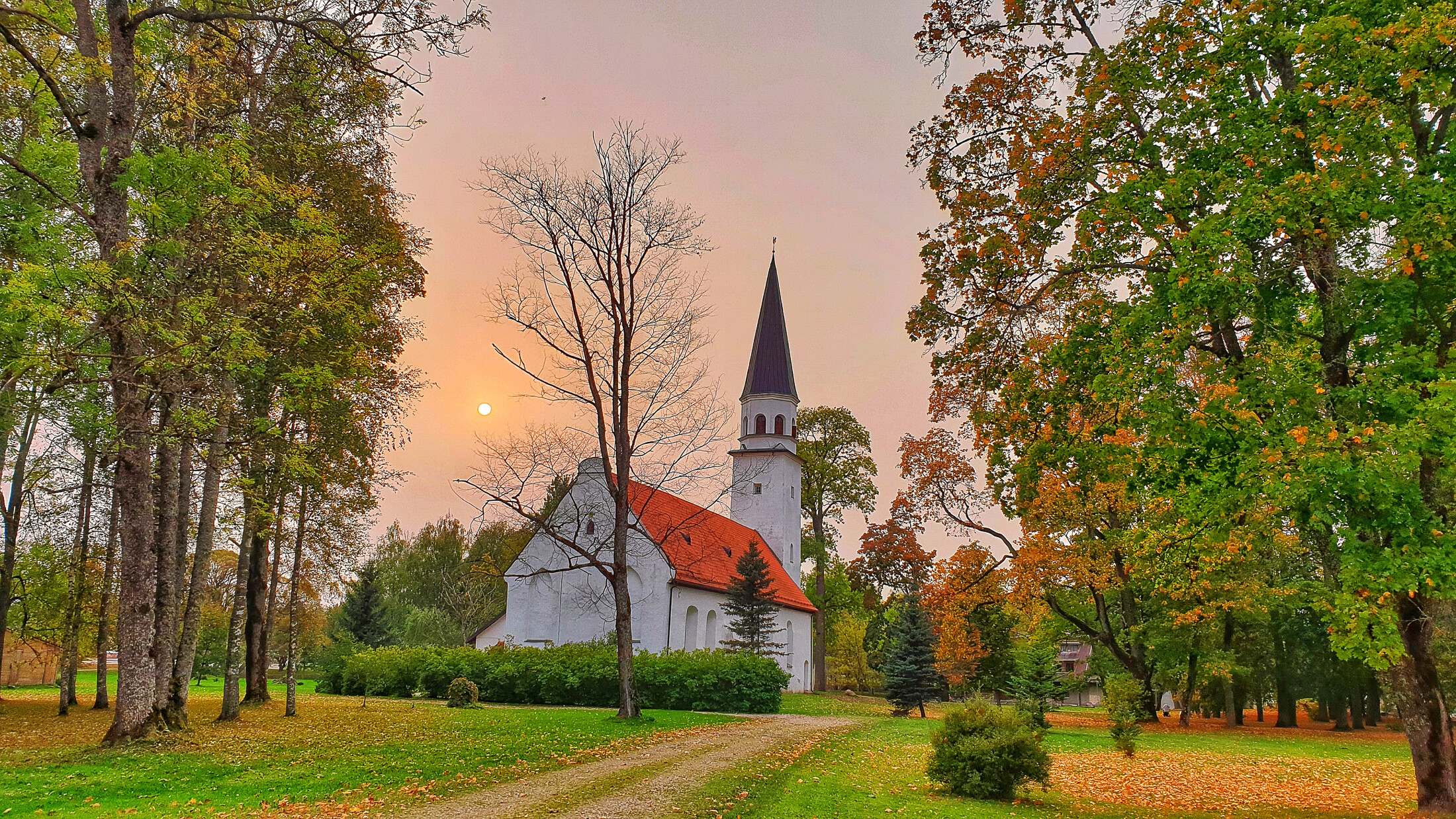
The parish of Sigulda was established back in 1225. Historical records show that the first church was built near Sigulda castle a year later. There are no records about its appearance, but we can presume it was a wooden structure. A masonry church was later built in its place and is mentioned in the 1483 chronicles as the church of St. Bartholomew.
Sigulda Roman Catholic Church

In 1995, the congregation started building a new church using the project of the architect Maija Krastiņa. The building was sanctified already in September 1996. The church is built on the honor of the Holy Jesus Heart. A reciprocal icon is in the main altar that is a copy of the painter Šēnbergs picture.
Bridges and roads
The bridge over Gauja River
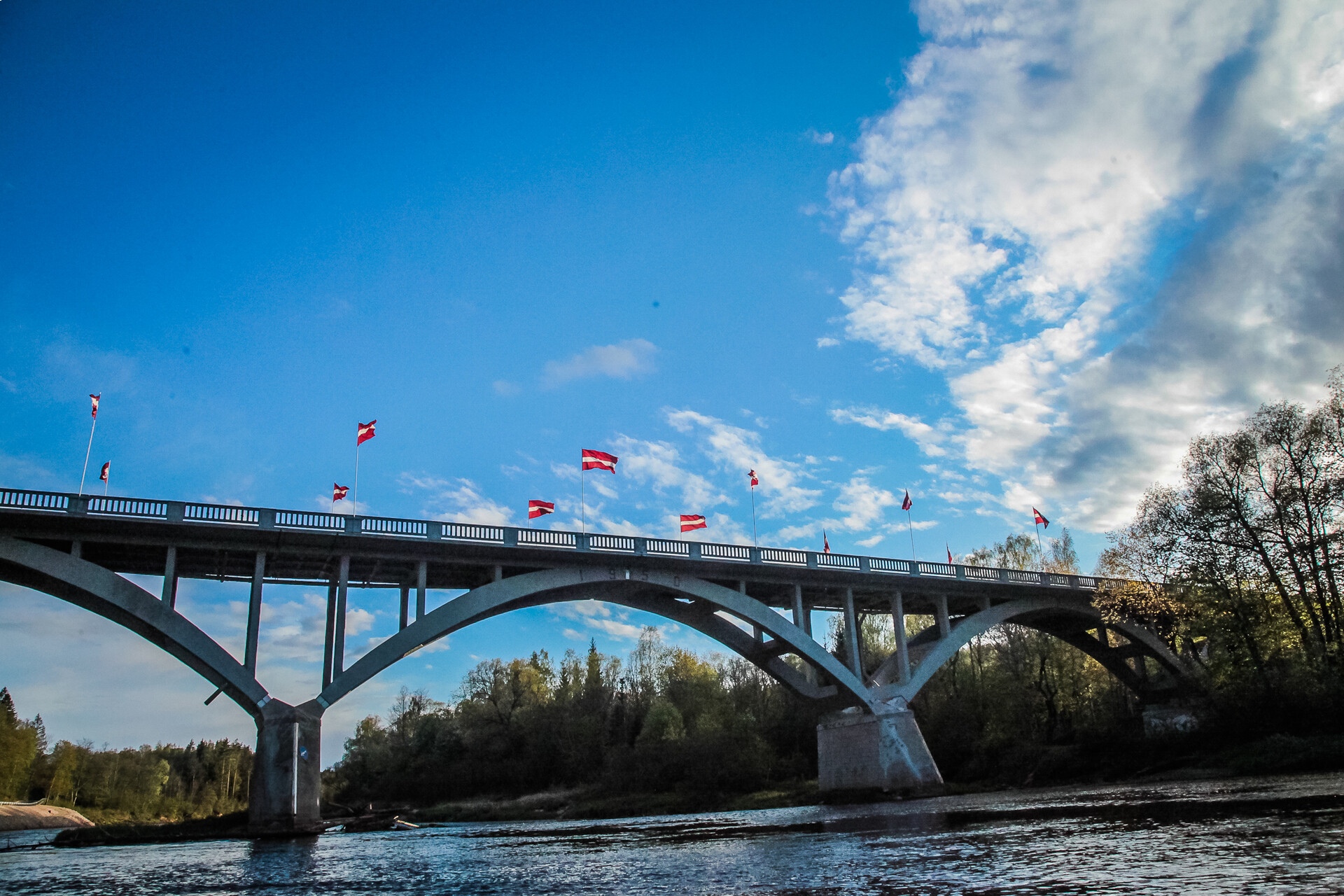
The first bridge over the Gauja river was built in 1937 as difficult technical construction for that time, but soon after war it was destroyed. The existing bridge was restored in 1950. The Sigulda Gauja Bridge is the only monolithic reinforced concrete bridge in Latvia that is based on three circle arches 35 meters wide. The total length of the bridge is 153 meters and the height above the river is over 16 meters.
Pedestrian bridge across Gauja River

The bridge was built in 1979 across the river Gauja with the aim to create a round route for the visitors of Gauja river old valley. A scenic view can be observed from the bridge to Velnala (Devil’s cave) cliffs and the Gauja river.
Monuments
Monument to Krišjānis Barons
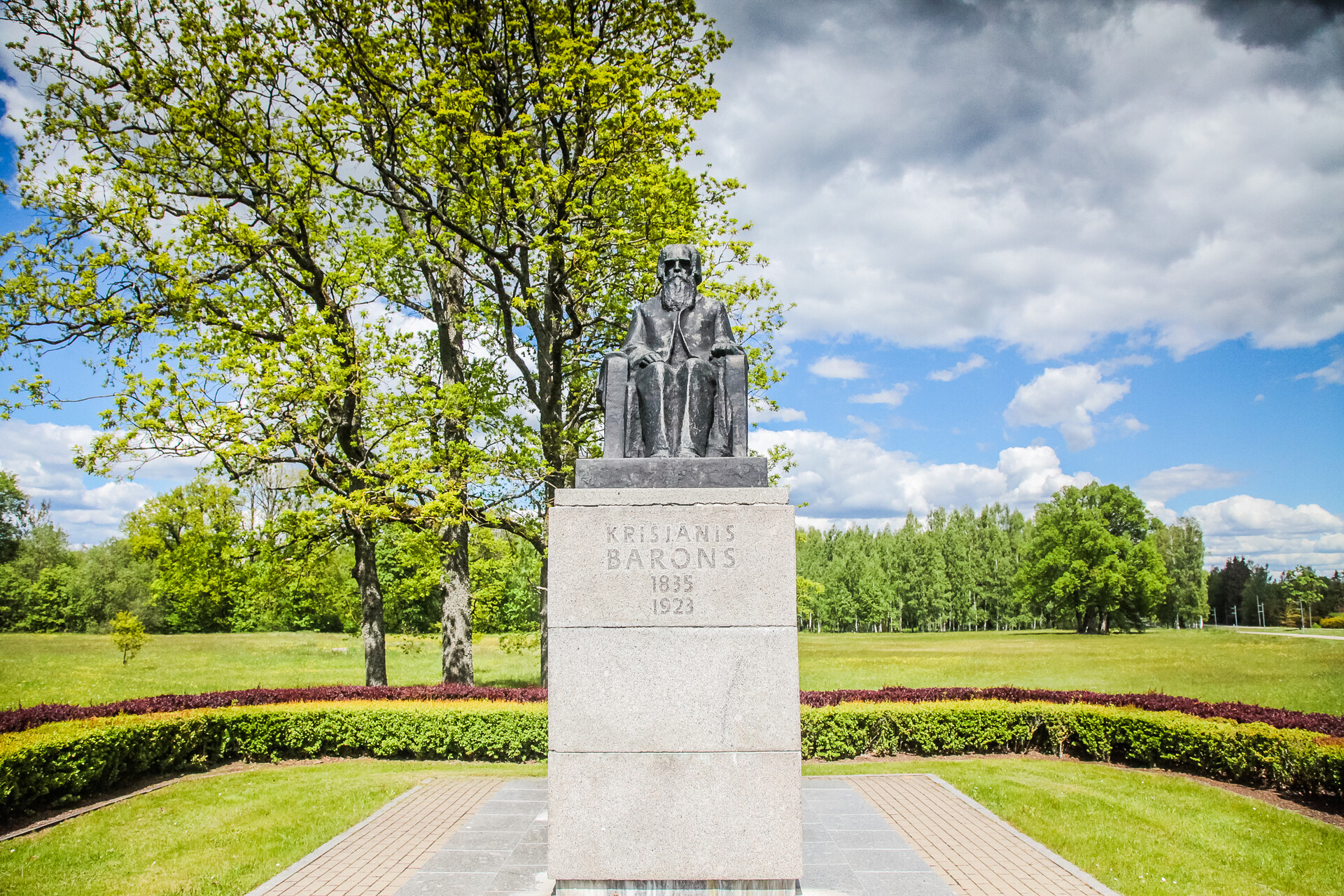
Monument to Rūdolfs Blaumanis
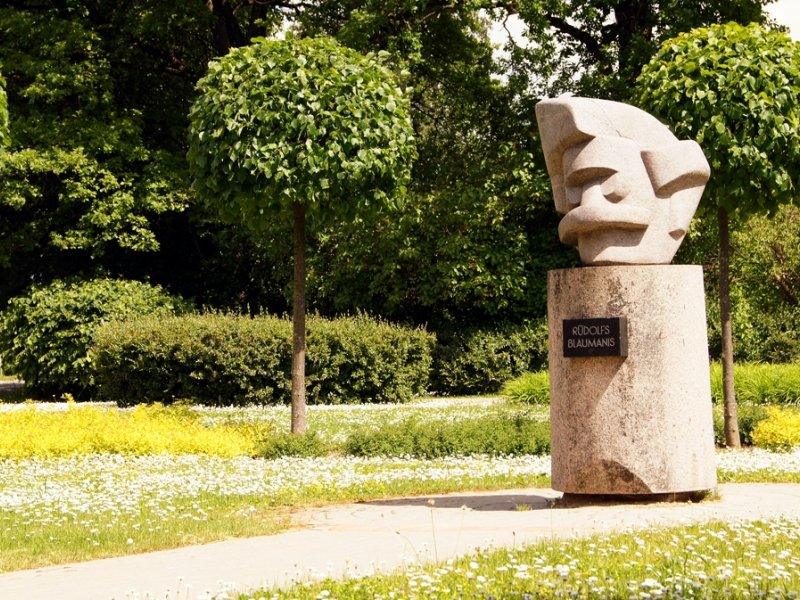
Castles and manors
Krimulda Medieval Castle
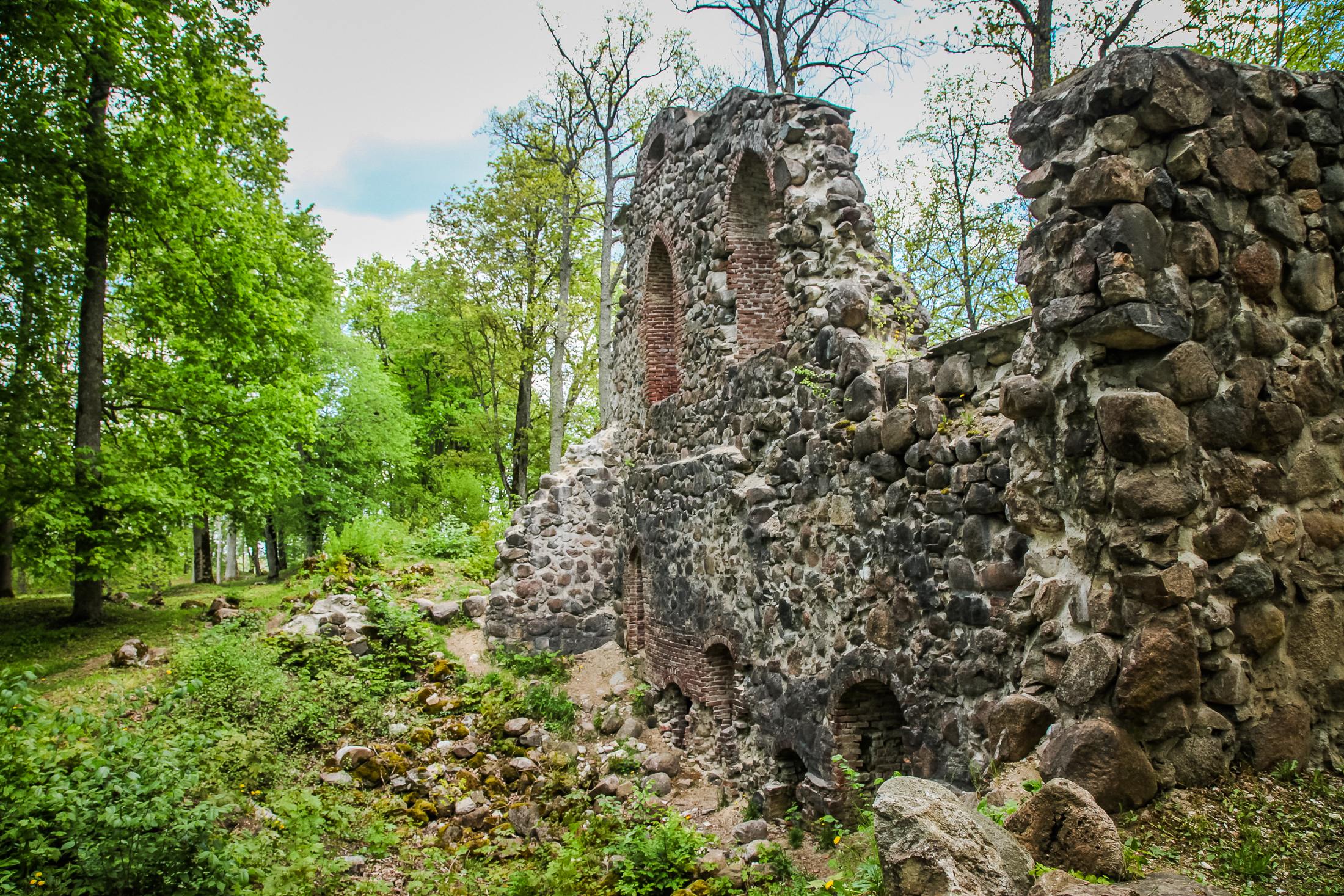
Castle of the Riga Capitulum, built around 1255, was the smallest of the three castles at the Gauja valley. The castle was not renewed after burning down in 1601.
The New Castle of Sigulda

The exterior of the New Castle of Sigulda built by the Knyaz Kropotkin family in 1878 has retained its neo-Gothic style, meanwhile, its interior became a pearl of national romanticism in 1937, when it hosted the Latvian Union of Writers and Journalists. Nowadays, the manor center buildings host workshops and salons of craftsmen and artists, where new skills can be learned, and souvenirs can be purchased.
Krimulda Manor
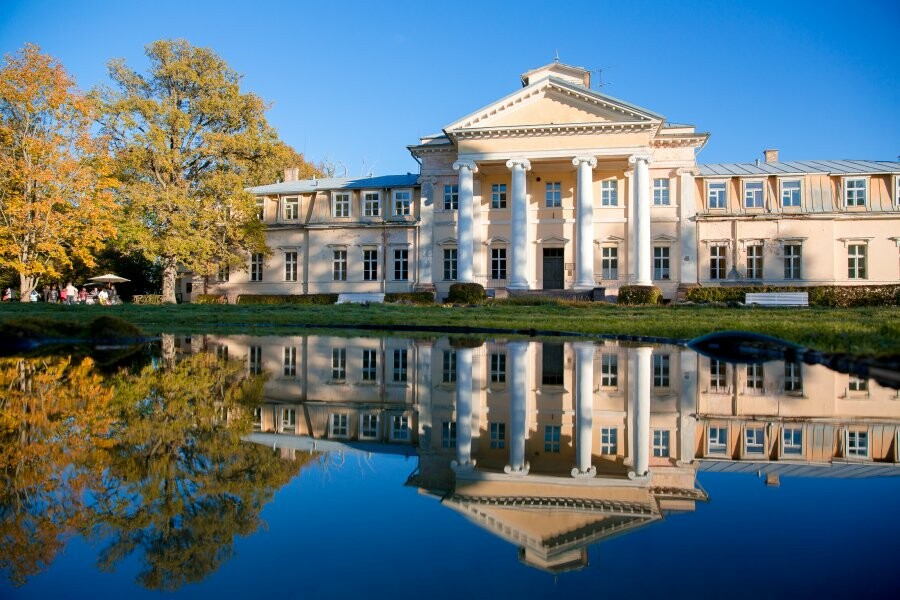
The residential house of Firsts Lievens was built around 1822 in the style of classicism. The manor complex features the manager’s house, coach house, cattle yard, Swiss House, etc. For 95 years already, a rehabilitation institution, which offers accommodation services as well, has been operating at the manor. Tasting events of fruit and floral wines are offered to the guests of the manor by prior arrangement. The medieval castle is situated nearby.
Historic buildings
Bundulītis
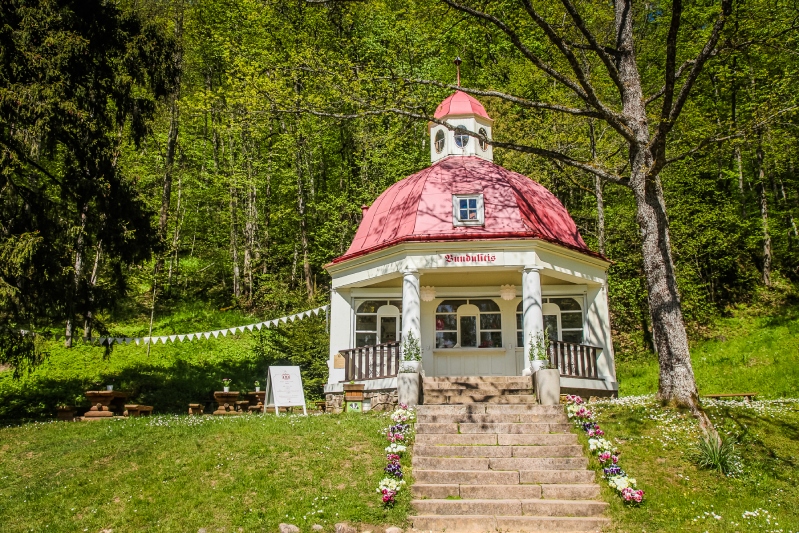
Kiosk Bundulītis, the former dairy pavilion was built in 1910 due to the order of Turaida manor owner to sell diary product and snacks for tourists visiting Turaida and Gutman’s Cave..
Krūmiņš house
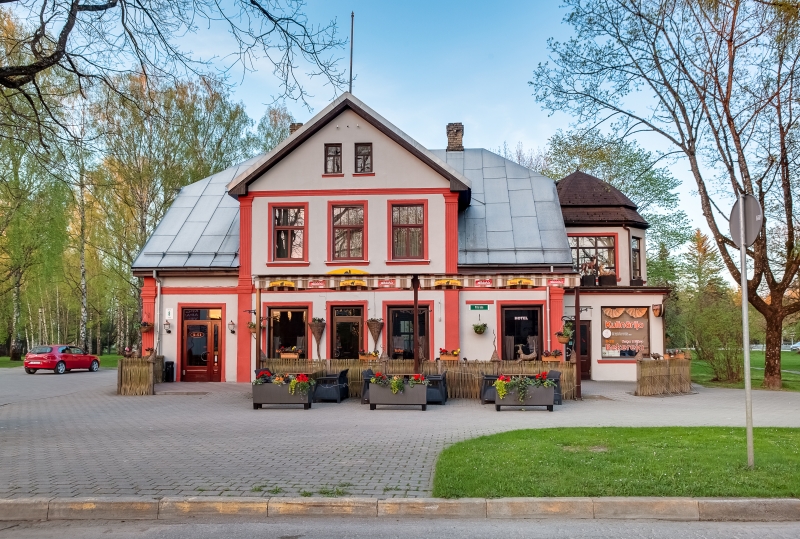
Architectural monument of local importance, number of state protection 8503. The building was built in the 20s of the 20th century, according to the project No.231 approved by the Construction Board of Sigulda on May 20, 1925 – “Krūmiņš’ residential building project in Sigulda, ground No. 766”.
Grīnbergs summer cottage
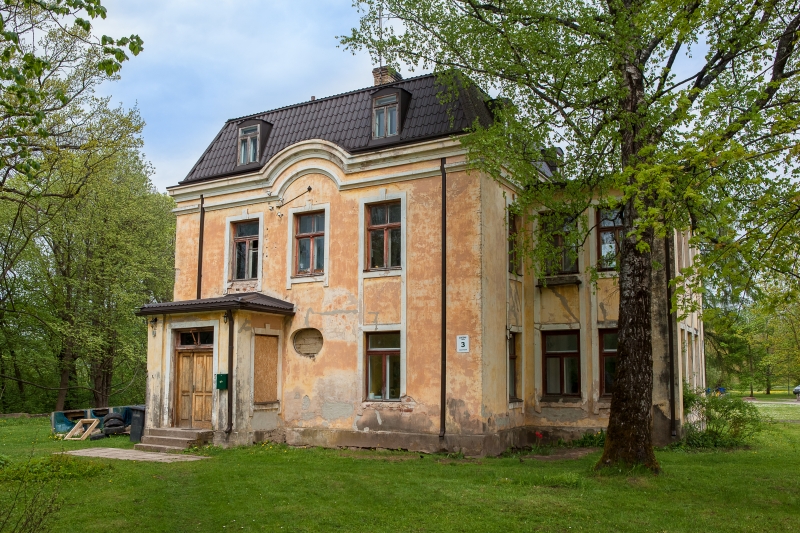
Historical and architectural monument of regional importance, the house of sculptor Teodors Zaļkalns brother.
“Here Teodors Zaļkalns in the veranda, through which the trees grew, often sculptured or laid in the lounge, was reading. He was cheerful and was very keen to run with children (by giant steps) around the pole.
The beautiful gates of this building with the carved inscription “J.G. 1905″ some years ago disappeared” wrote Z. Zuze in 1988.
the rest come see for yourself!
